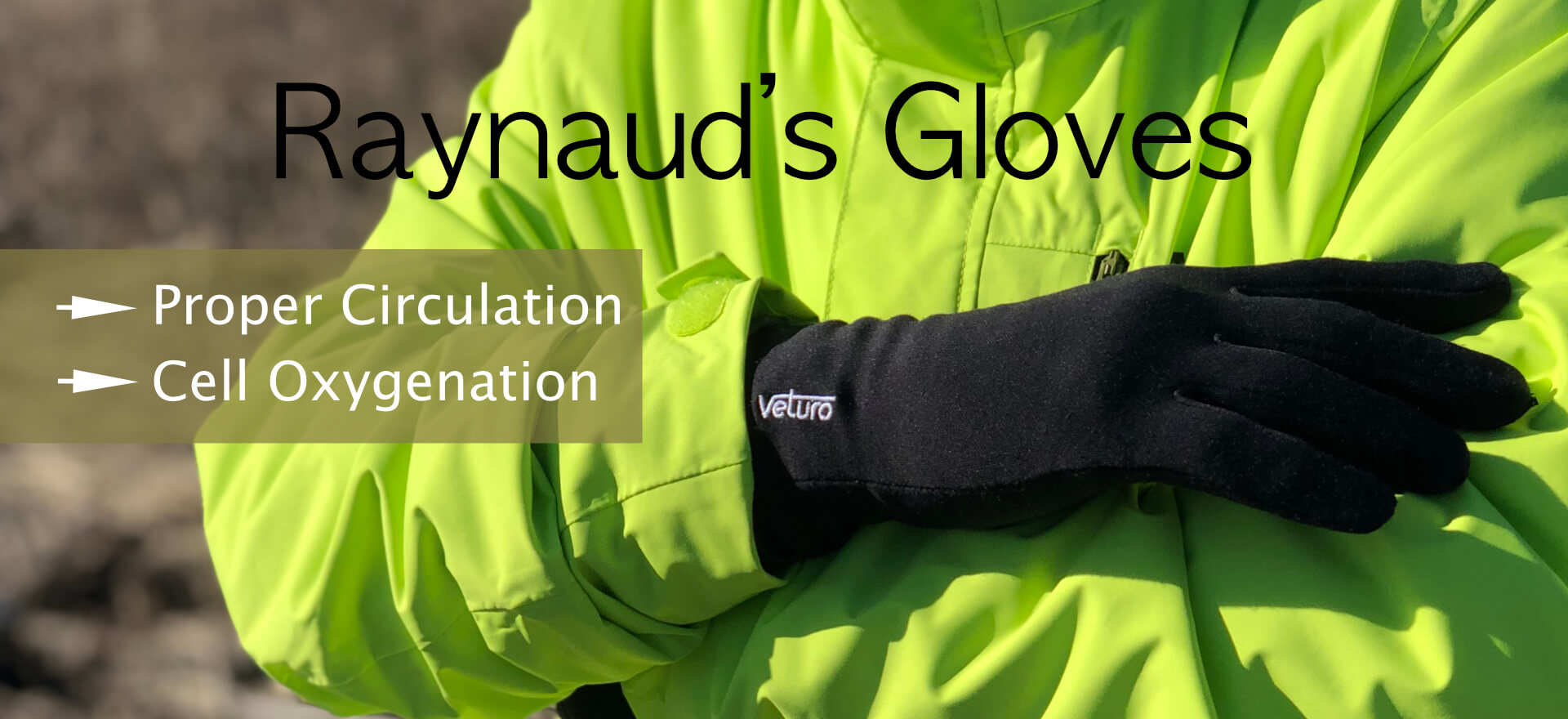Raynaud’s Phenomenon affects more women than men and 7% of the population
Raynaud’s disease/phenomenon is named after French physician Maurice Raynaud who described it as a disorder that affects blood vessels, mostly in the fingers and less commonly in toes. It causes the blood vessels to narrow when you are exposed to cold temperatures, sudden temperature changes or emotional stress. The skin will change in color, usually accompanied by discomfort such as pain, tingling or numbness.

People whose fingers are exposed to repeated physical stress such as typists, pianists, or other repetitive actions for long periods of time may develop a type of Raynaud disease. Also, colder climates play an important role in developing the condition.
There are many ways you can manage Raynaud’s phenomenon symptoms and live as normal a life as possible. Keep warm, eat healthy, exercise, far infrared therapy, sleep well, take the medicine your doctor recommends, etc…a little bit of each will make a difference.
Raynaud’s Phenomenon Gloves
Raynaud’s Phenomenon Gloves gently heat up hands to increase micro-circulation, which ultimately relieves Raynaud’s syndrome symptoms and promote healing. Our gloves for Raynaud’s sufferers are driven by Infrared technology, Merino Wool and Tech Fleece. Choose between full fingered and fingerless model for ultimate comfort. The gloves are natural, safe, non-invasive and cost-effective.
Raynaud’s Phenomenon Gloves help:
- Regulate hand temperature
- Increased local blood flow
- Stimulate tissue regeneration
- Help prevent cold triggers
- Pain and stiffness relief
- Enhanced comfort and well-being

FLEECE-LINED SOFTSHELL WATER-RESISTANT TOUCHSCREEN THERMAL GLOVES
GLOVES MADE WITH LUXURIOUSLY SOFT 100% MERINO WOOL
INFRARED GLOVES LINERS FOR RAYNAUD’S & ARTHRITIS
Types of Raynaud’s
You might hear this disease called by many names. There are two types, primary and secondary Raynaud’s.
Primary Raynaud’s (or Raynaud’s disease) happens without any other illness behind it. The symptoms are often mild.
Secondary Raynaud’s (Raynaud’s syndrome, Raynaud’s phenomenon) happens as a result of another illness. It’s often a condition that attacks your body’s connective tissues, like lupus or rheumatoid arthritis. It’s less common, but it’s more likely to cause serious health problems. This can include things like skin sores and gangrene. These happen when cells and tissue in your extremities die from lack of blood.
Raynaud’s Phenomenon Symptoms
Primary Raynaud’s (Raynaud’s disease) happens on its own. The cause is not known.
The secondary Raynaud’s also known as Raynaud’s syndrome or Raynaud’s phenomenon is caused by injuries, other diseases, or certain medicines.
The symptoms of Raynaud’s phenomenon can include:
Extreme sensitivity to cold. The body may react to emotional stress as if it were reacting to cold.
Skin color changes. Fingers, toes, and/or sometimes the ears, lips and nose turn white due to lack of blood flow (called pallor). The blood that’s left in the tissues loses its oxygen and the affected area turns blue (called cyanosis). As fresh oxygen-rich blood returns to the area, it often turns bright red.
Coldness, pain and numbness. A lack of oxygenated blood in the fingers triggers these feelings. Numbness is the sensation that the hands fingers have “fallen asleep.”
Warmth, tingling and throbbing. The quick return of blood to the fingers triggers these feelings.
Skin ulcers and gangrene. For people with severe undiagnosed disease and attacks that last a long time, painful, slow-healing sores may occur in the fingertips. In rare cases, a long-term lack of oxygen to the tissues can result in gangrene (when a body part loses its blood supply).
Whether you are looking to purchase gloves for Raynaud’s phenomenon, cold hands, or to just keep your hands warm, Veturo Therapy is the brand you can rely on for scientifically backed, technologically advanced and fashionable gloves.
Anyone who notices signs or symptoms of Raynaud’s disease/syndrome always can consult a health-care provider before taking a decision.
Sources: National Institute of Arthritis and Musculoskeletal and Skin Diseases, WebMD, Medline.Plus (US National Library of Medicine), Arthritis.Foudation, Mayo-Clinic, Healthline, American College of Rheumatology.





